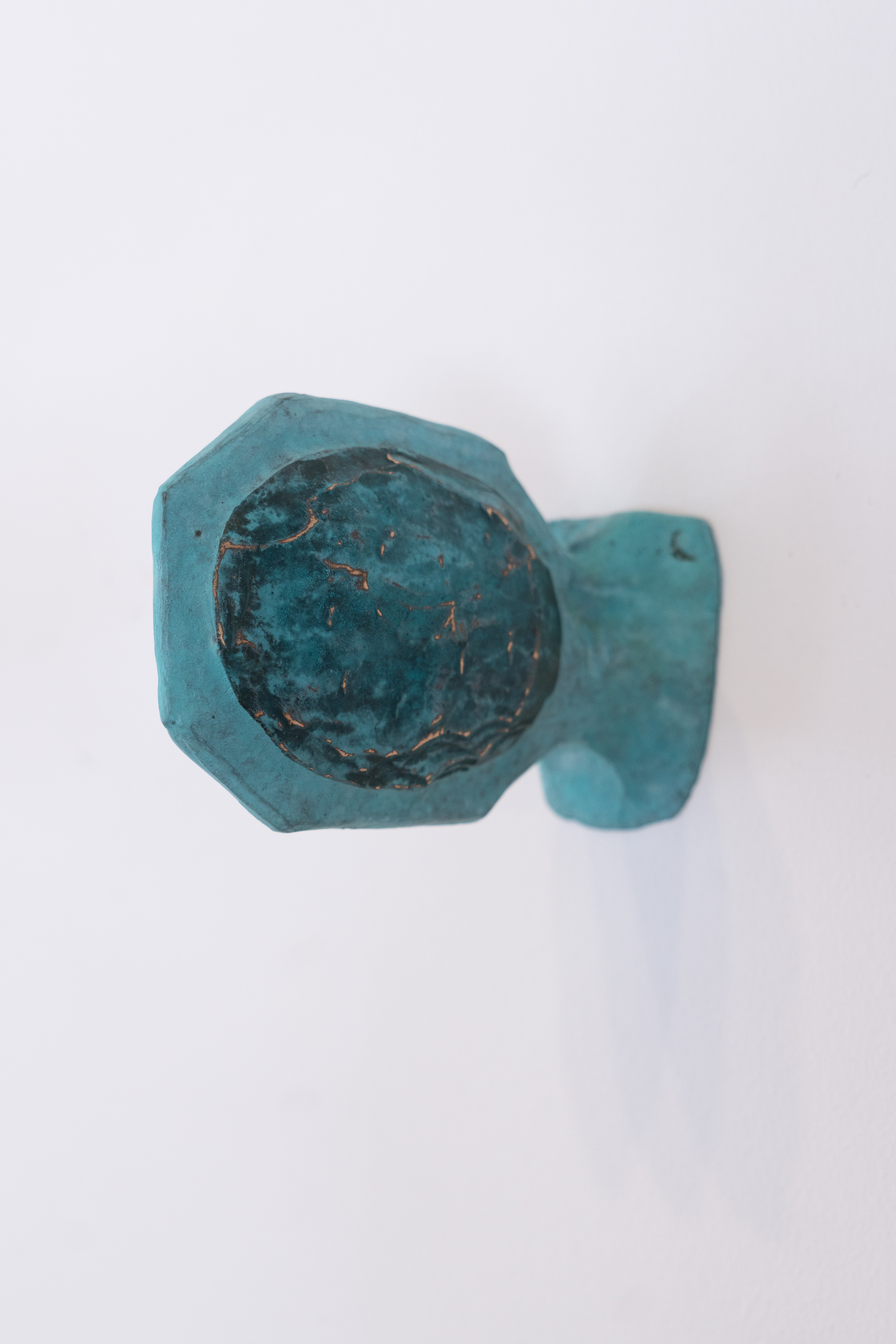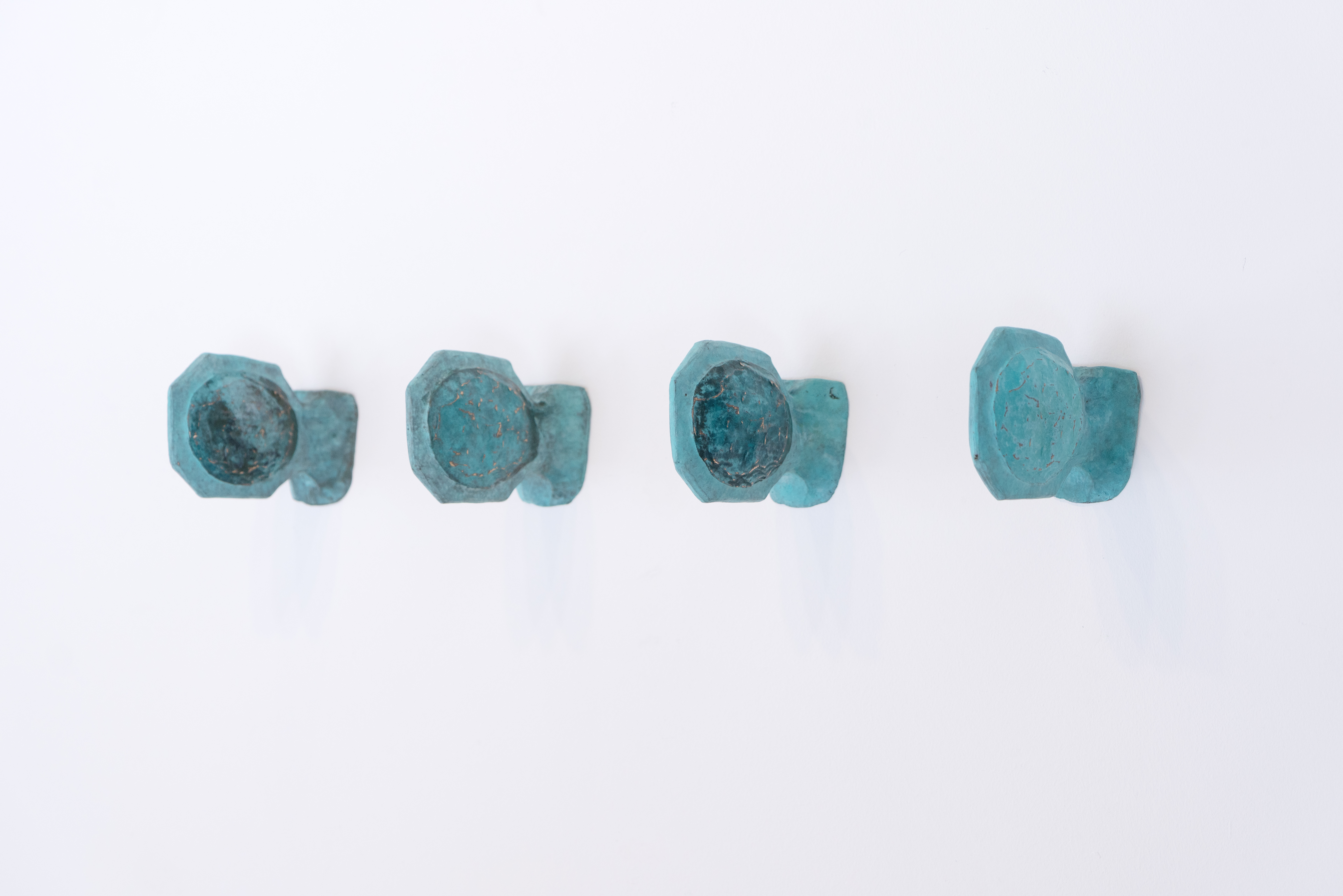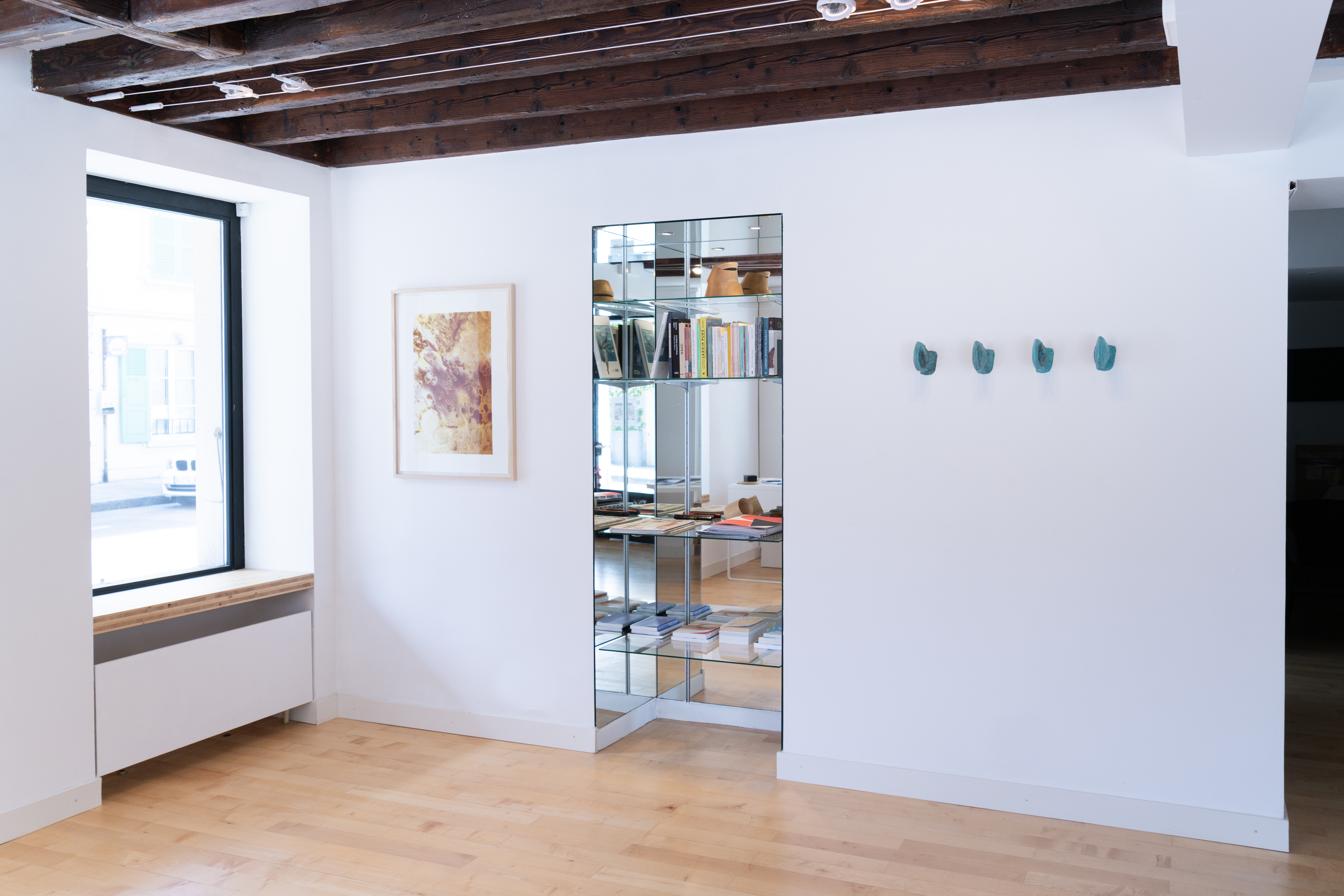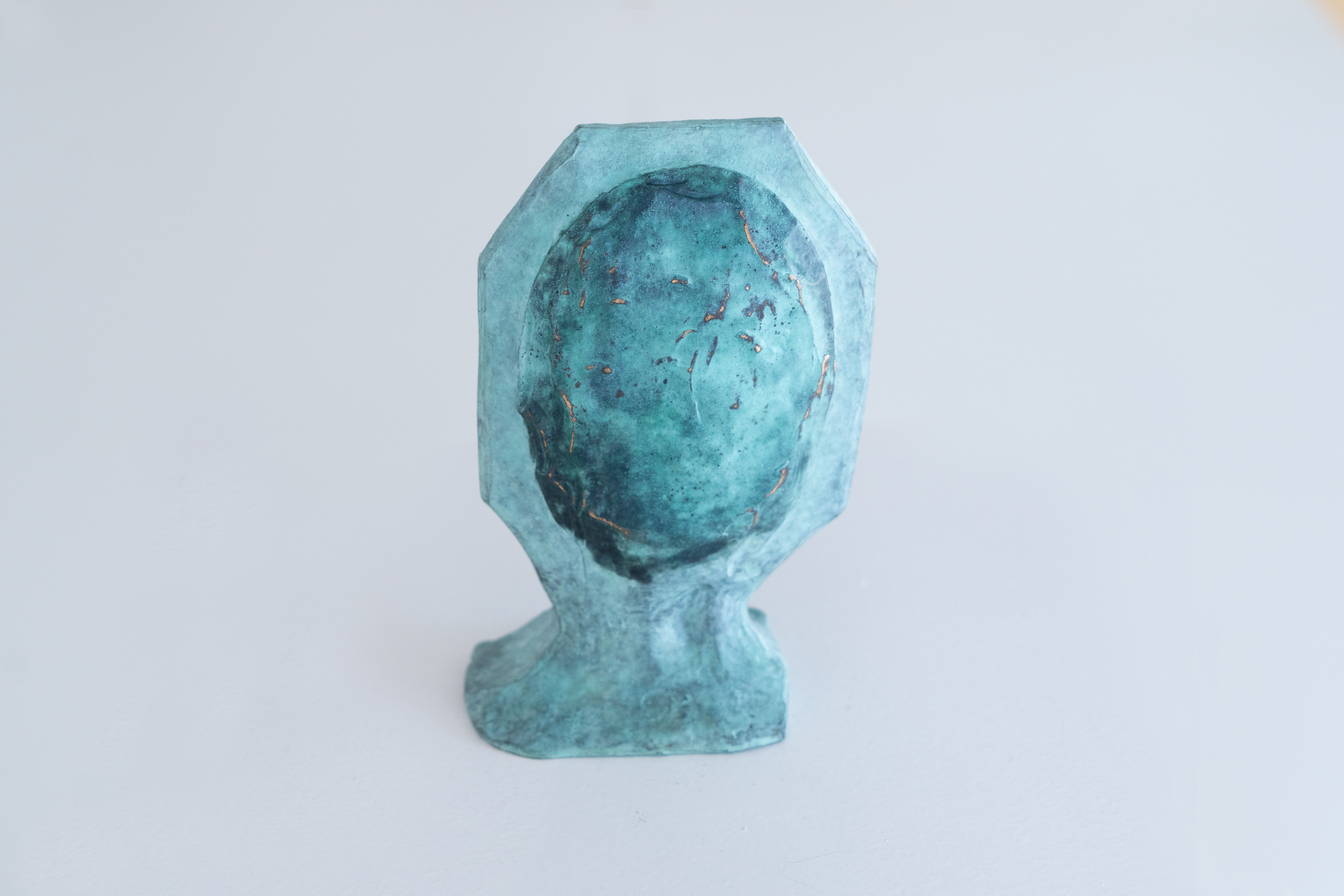
Camille Dumond, Souveillance, 2025

Camille Dumond, Souveillance, 2025

Camille Dumond, Souveillance, 2025, exhibition at Stratégies Obliques, Carouge

The character gets into the car and places the keys in the ignition without starting the engine. He stares ahead for a long time, his gaze getting lost in the surface of the rearview mirror.
The device allows him to see behind without turning his head. He fixes his eyes on the reflection, full of motion, in the small rounded screen. His eyes are so absorbed by the image that the object becomes an extension of his body—a supplementary film that sends rays of light deep into his retina, forming a composition that is repeatedly inverted. In this moment, he exists only through his gaze; his body has become immaterial.
To reach him, one would have to decapitate the metal extension grafted onto the vehicle. The hollow skull would fall to the ground, shattering his eye, as if turned to stone. The shock would reveal the mirror’s metallic nature, the aluminum plate fused to the glass turning dull again, retaining its shine only in rare, untouched areas.
When approached from the perspective of sousveillance*, the rearview mirror, like the ancient mirror, becomes a metaphorical tool for reversing gazes and subverting systems. Whereas in mythology the mirror evoked introspection or a partial unveiling of the self, tinged with mystery, the contemporary rearview mirror is a prosthetic object, grafted onto vehicles as an extension of the gaze.
This gaze, oriented backward, is paradoxically turned toward the future: seeing what comes from behind allows one to secure the present. It articulates a content that is always fragmentary, its limits being those of the reflective surface and the angle from which the body engages with it.
By reversing classical surveillance, it allows those below to look upward—though without gaining a complete view or full power.
Citizen-filmmakers, like the eye in the rearview mirror, hold only a portion of reality. The reflection, often unstable and indirect, is both memory and anticipation. By refusing a direct reading of reflections and shifting the focus to the materiality of the object itself—its mimetic, semi-rounded form that conceals as much as it reveals, it becomes a kind of inverted narrative clue. The rearview mirror questions not only what we see, but how we look, and above all, what we choose to show or to hide within systems of power and perception.
Camille Dumond and Jean-Marie Fahy
* Sousveillance refers to the practice of recording or observing authority figures or structures "from below," in contrast to surveillance, which typically implies observation "from above."
Camille Dumond
Sousveillance, 2025
Patinated bronze
16 x 10 x 6.5 cm
Edition of 5 copies + 2 AP
Launched at Stratégies Obliques, Carouge
Ask for availability and price